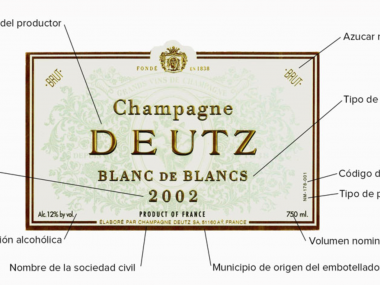The world of Spanish sparkling wines has its own codes. Traditionally, the term “Cava” is applied to any Spanish wine with bubbles, but in the last decades different classifications have been developed to better distinguish the wines according to their geographical origin as well as the particularities of their elaboration method.

What wines are included in the DO Cava?
Cava is a Denomination of Origin that encompasses all those wines made using the traditional champenoise method, which basically consists of the second fermentation, the ageing process and the release to the market all taking place in the same bottle, where the bubbles are formed naturally.
In geographical terms, DO Cava is very broad, comprising some 160 municipalities, spread over seven autonomous communities. The core of production is concentrated in Catalonia, with 63 municipalities in Barcelona, 52 in Tarragona, 12 in Lleida and 5 in Gerona; in the Ebro basin area, it includes 2 towns in Aragón, 2 in Navarra, 18 in La Rioja and 3 in the Basque Country. There are almost 32,000 hectares and some 260 wineries, with the Penedés (Sant Sadurní d’Anoia) being the region where most production is concentrated, around 90%.

Which wines carry the Classic Penedès and Corpinnat labels?
Both the Classic Penedès and Corpinnat labels are two brands that group together sparkling wines produced within the Penedès DO, which have been coined with the intention of distinguishing themselves within the wide world of Cava, in order to highlight their territorial specificity and the quality of their production process.
Clàssic Penedès is a brand used since 2014 to designate the sparkling wines produced within this DO. It was created at a time when this type of wine was receiving a strong boost within the DO with the entry of new wineries.
As basic requirements, Clàssic Penedès wines must be 100% organic quality sparkling wines, i.e., made using traditional cultivation methods and 100% organic techniques.

At the same time, they must be 100% Penedès wines, which means that they are not only wines made in this DO in their entirety, but also from its ancestral native varieties. Finally, they are 100% Reserva wines because, in order to maintain quality standards, one of the requirements is that the wines spend a minimum of 15 months in the cellar. On the other hand, they can be made using both traditional and ancestral methods.
Corpinnat is a label of excellence registered in 2017, whose name is composed of the word ‘cor’ (heart in Catalan), and ‘Pinnat’, which comes from the etymological root Pinnae, referring to the origin of the place name Penedès. This collective brand encompasses wineries in the heart of the Penedès, which make their wines from 100% organic grapes harvested by hand and vinified entirely on the property.
In terms of territorial delimitation, it covers an area of 997 km2 and includes all or part of the following regions: Alt Penedès, Alt Camp, Baix Penedès, Tarragonès, Garraf, Baix Llobregat and Anoia.

The Corpinnat brand is a more distinguished label, reduced to a very small number of members, and raises the bar a little in terms of requirements. For example, instead of 15 months of ageing, it must be 18; the winemaking method is the traditional one and wine cannot be bought in bulk for winemaking.
In any case, both initiatives are part of an effort to highlight the value of sparkling wines produced within the Penedès Appellation, pioneers in organic winemaking.
If you want to know more about the differences between Cava, Corpinnat and Clàssic Penedès, don’t miss the interview that our CEO and sommelier Claudio Comella conducted with Joan Huguet, president of the DO Penedès.






